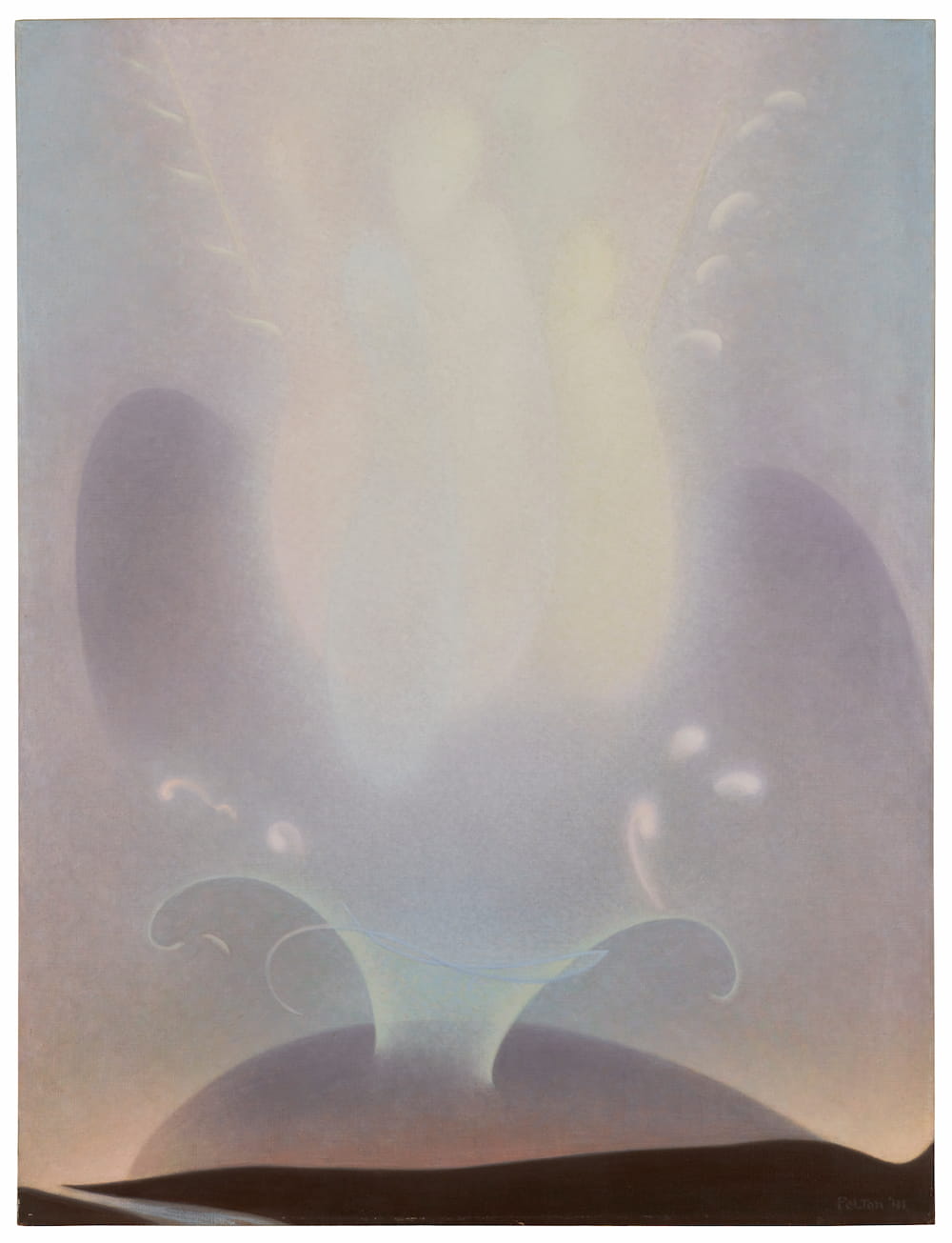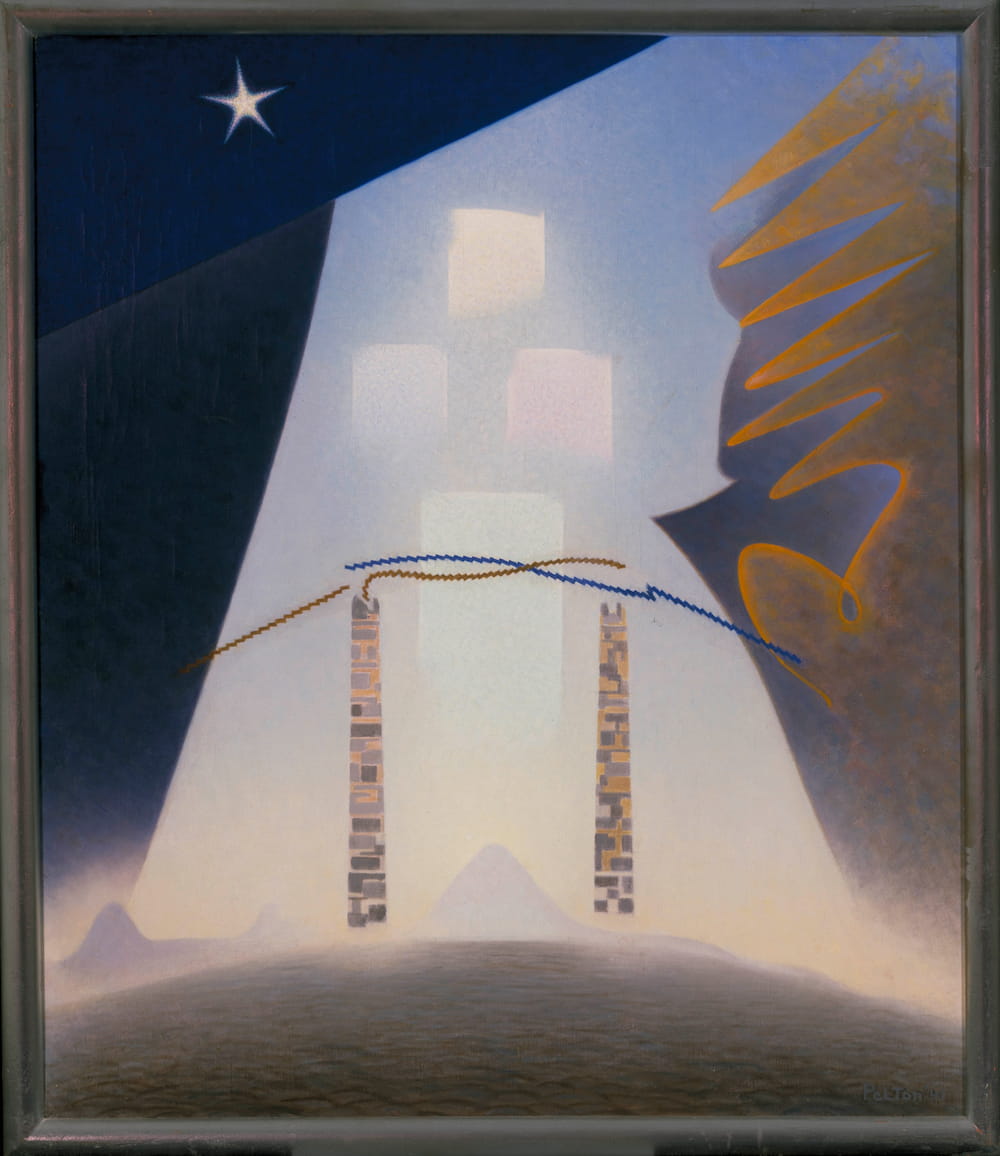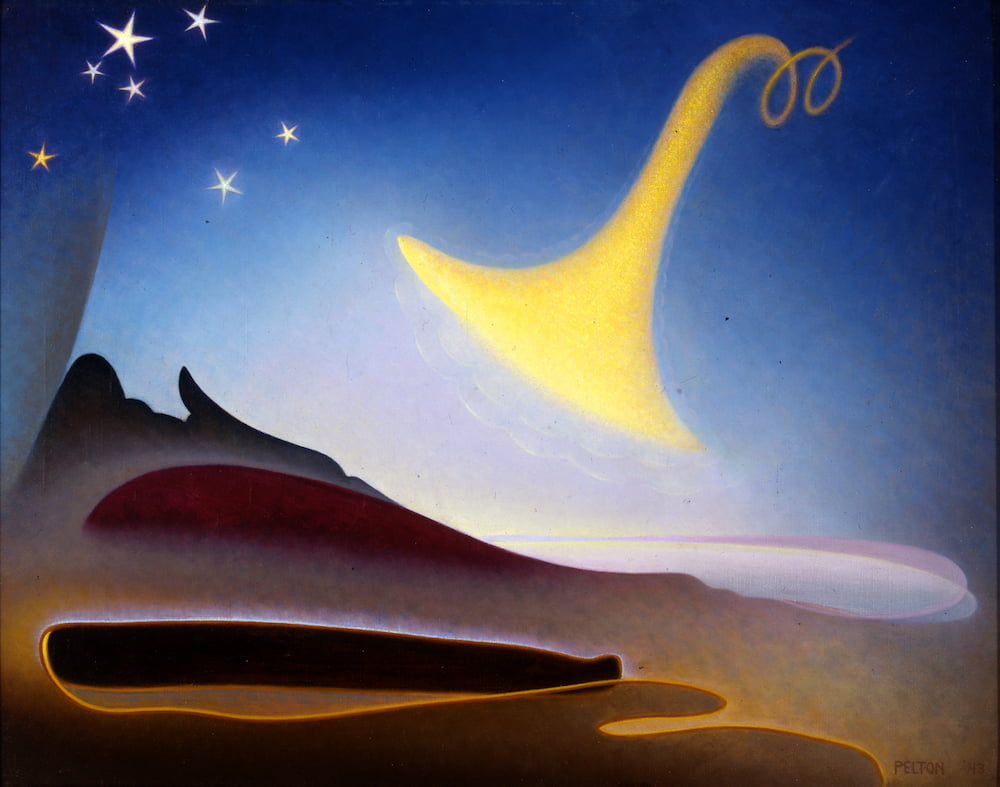Transcendental Painting Group
Much of Pelton’s work is inspired by her interest in Agni Yoga and its principal focus on fire as a guiding force. Because of this and other esoteric interests, Pelton was asked to participate in an incipient New Mexico-based collective known as the Transcendental Painting Group (active 1938 to 1941) whose members shared her belief that abstract art was a vehicle for transporting viewers to enlightened realms. This short-lived group was formed by the artist Raymond Jonson, who was dissatisfied with the term “non-objective,” and it included Emil Bisttram, Ed Garman, Robert Gribbroek, Lawren Harris, William Lumpkins, Florence Miller Pierce, Horace Towner Pierce, and Stuart Walker. Pelton was an honorary member. The group briefly reconnected Pelton to the Southwest, although there is no evidence that she ever traveled back there after her visit to Taos in 1919. After 1941 and the group’s demise, Pelton, then sixty years old, slowed her production of abstractions and temporarily turned her attention to the desert landscapes, which brought much-needed income.
Gran parte de la obra de Pelton está inspirada en su interés por el Agni Yoga y su enfoque principal en el fuego como fuerza motriz. Debido a este y otros intereses esotéricos, Pelton fue invitada a participar en un incipiente colectivo basado en Nuevo México conocido como el Grupo de Pintura Trascendental (activo de 1938 a 1941) cuyos miembros compartían su creencia de que el arte abstracto era un vehículo para transportar a los espectadores a reinos iluminados. Este grupo de corta duración fue formado por el artista Raymond Jonson, quien no estaba satisfecho con el término "no objetivo", e incluía a Emil Bisttram, Ed Garman, Robert Gribbroek, Lawren Harris, William Lumpkins, Florence Miller Pierce, Horace Towner Pierce y Stuart Walker. Pelton fue miembro honorario. El grupo reconectó brevemente a Pelton con el suroeste, aunque no hay evidencia de que haya regresado allí luego de su visita a Taos en 1919. Después de 1941 y de la disolución del grupo, Pelton, que entonces tenía sesenta años, disminuyó su producción de abstracciones y temporalmente dirigió su atención a los paisajes desérticos que generaban ingresos muy necesarios.

The Blest, 1941, Oil on canvas, Collection of Georgia and Michael de Havenon
This painting portrays a group of shadowy, abstracted figures who have transcended their physical form and become disembodied energy. It was the single painting displayed on the altar at Pelton’s memorial, chosen by her relatives who considered it a “spiritual parable” that would guide Pelton into the afterlife.

Future, 1941, Oil on canvas, Palm Springs Art Museum, California; 75th Anniversary gift of Gerald E. Buck in memory of Bente Buck, Best Friend and Life Companion
Pelton painted Future in 1941 during the outbreak of World War II in Europe. She described the painting as “a kind of Pilgrim’s Progress,” guiding viewers from the darkness and oppression of the earthly world to the realm of enlightenment. To reach the “mountain of aspiration” in the distance, one had to journey “through darkness and depression, across a stony desert…Through a symbolic arch is seen a mountain of vision above which open by degrees windows of illumination.” Floating in the liminal space between earth and sky, the four glowing rectangles in the picture represented lighted rooms “offering some solace and comfort.” To enter them, one first had to pass through “pillars, not heavy but built up of stone-like forms.”

Awakening (Memory of Father), 1943, Oil on canvas, New Mexico Museum of Art, Santa Fe; museum purchase, 2005 2005.27.1
Awakening (Memory of Father) pays homage to Pelton’s deceased father, who died from a morphine overdose when the artist was ten. The painting symbolizes her father’s enlightened rebirth, the dark rectangular form of his body at the bottom of the canvas summoned to awaken to a new life by a “golden trumpet flower…emitting light and sound.” In the middle of the picture, between the luminous stars and far-off “mountain of release,” a range of mountains rises, symbolizing her father’s “tragedies past.” As Pelton wrote in her journal, “Stars come out and the form buried below the purple mountain responds to the light of a new day.”
